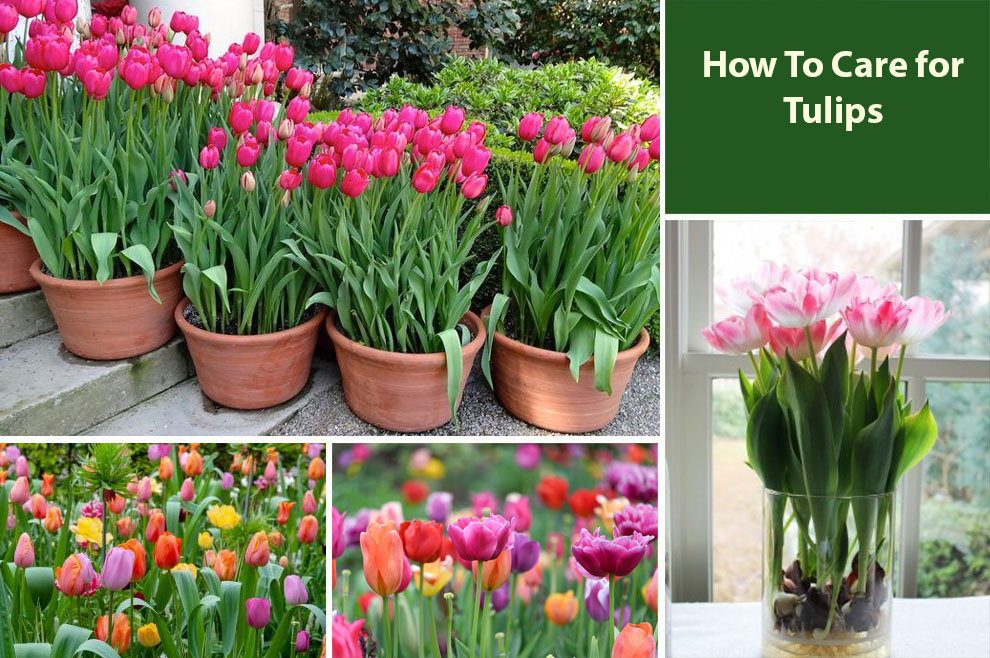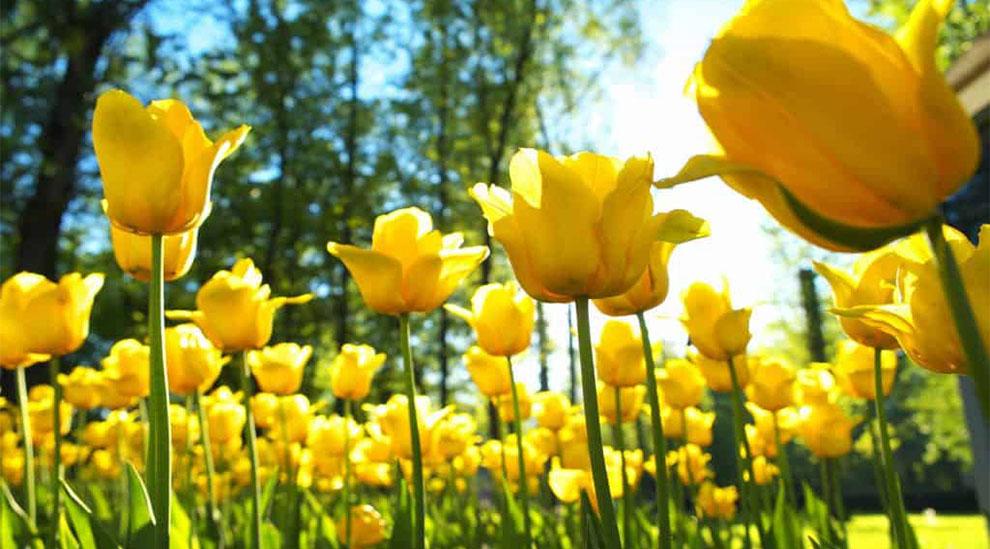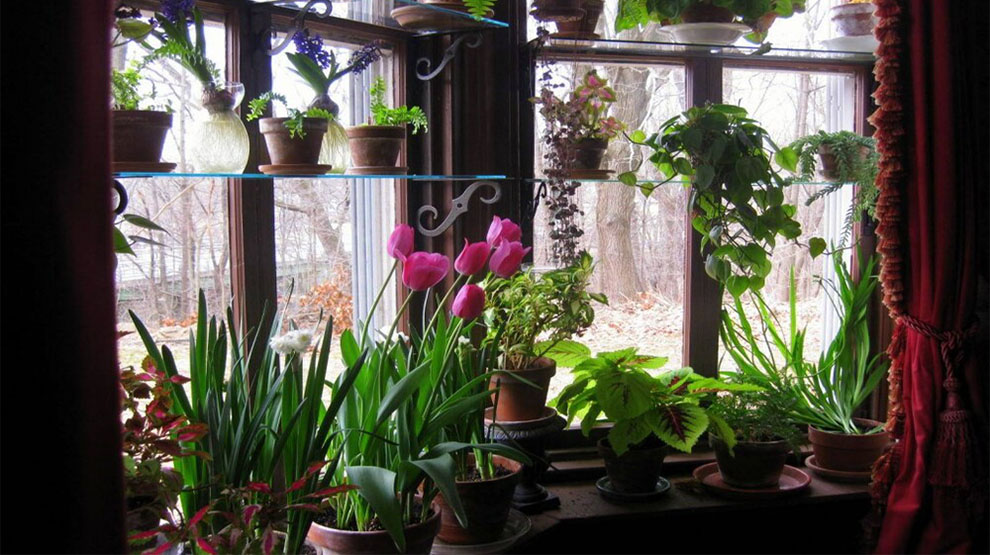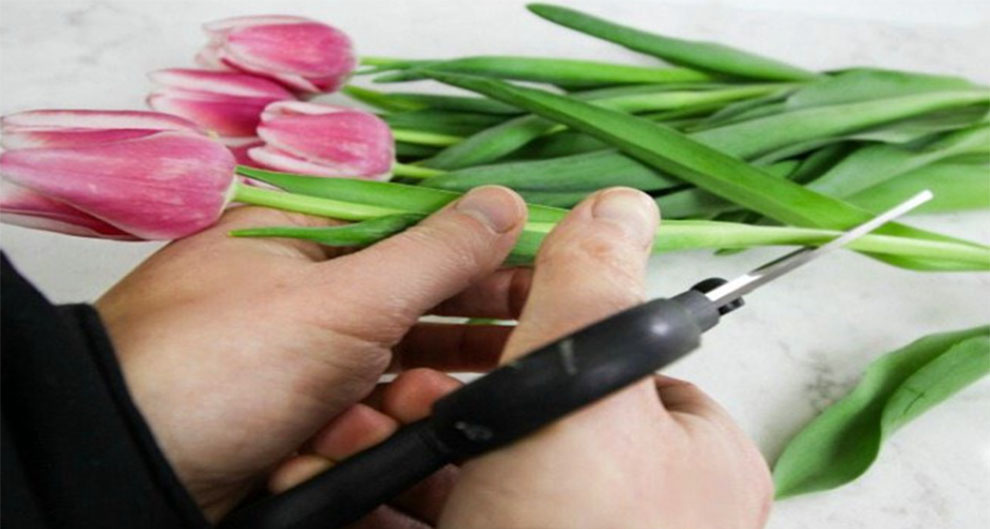Tulip Care Guide That Tells You How To Take Care Of Tulips
Tulips bloom in well-draining soil near a sunny spot. You must water them regularly, especially during dry periods. Deadhead spent flowers and provide a layer of mulch for winter protection.

Tulips are vibrant and beautiful flowers that bring a touch of elegance to any indoor space or garden. Proper care is imperative to ensure their longevity and health. Whether you are just starting or a seasoned gardener, understanding how to take care of tulips is crucial.
Firstly, tulips thrive in well-draining soil rich in organic matter. Fertilizers can be used to replenish the nutrients in the soil from time to time. Adequate sunlight and watering are other crucial requirements, especially during the active blooming period.
So, pick a location that receives at least six hours of direct sun daily for tulips. With watering, it is imperative to strike a balance. Overwatering can result in bulb rot, whereas underwatering can stunt growth. Hence, you must aim for moist soil but not waterlogged.
For Tulips, you can use a slow-release, balanced plant food in fall or early spring, before and after the blooming period. Furthermore, deadhead the spent flowers to redirect the plant’s energy towards bulb development.
Since tulips are susceptible to pests like aphids and diseases like gray mold, preventive measures, and regular monitoring are vital.
With these tips and fundamental guidelines, you will be on your way to maintaining stunning and healthy tulips. Stay tuned for more detailed instructions on every aspect of tulip care to have your flowers thriving and bringing joy year after year.
How To Care For Tulips Outside?
Proper tulip care starts at the time you plant them. So, you must be cautious about the planting timing and technique to receive excellent results. You can ensure your tulips get the best care for healthy growth and beautiful blooms by following the steps below to the T.
A. How and When To Plant Tulip Bulbs?
Planting tulip bulbs is a straightforward process. You can go about it in a few simple steps.
- Select a location with ample sunlight and well-draining soil.
- Prep the soil by loosening it and removing any debris or weeds.
- Dig a hole approximately three times the bulb’s depth and insert the bulb in the hole.
- Ensure the bulb points upwards.
- Cover it with soil, and try firming it down using your fingers.
As for the timing, you must plant your tulip bulbs in the fall, approximately six to eight weeks before the ground freezes. It lets the bulbs establish their root system before winter commences, ensuring a better chance of successful growth and blooming in the spring.
B. Growing Temperature For Tulips
Tulips have specific temperature requirements for their optimal growth. So when you plant the bulbs, the ideal temperature must be around 55 to 60°F (13 to 15°C). It lets the bulbs establish their roots without extreme heat or cold exposure.
Once planted, tulips can endure low temperatures and thrive in chilly climates. They need a period of cold dormancy during winters with temperatures between 35 and 45°F (1.5 to 7°C).
In spring, tulips start growing and blooming. It is when they need temperatures between 55 and 68°F (13 to 20°C). Do not expose the tulips to excessively high temperatures over 75°F (24°C). It can cause the flowers to wither and decline prematurely.
C. Do Tulips Need Sun?

Yes, tulips need sunlight to thrive and yield healthy blooms. They are sun-loving flowers and benefit from direct sun for most of the day. Ideally, your tulips must get at least six hours of direct sun daily.
Sunlight is crucial for photosynthesis, where tulips convert energy into nutrients and food. Without ample sun, tulips may become leggy and weak and fail to produce vibrant flowers.
When picking a location for a tulip plantation, prioritize the areas that receive adequate sun. But it is worth noting that tulips can tolerate some shade, especially in the afternoon when the sun is the strongest.
So, an essential step worth noting in this tulip care guide is learning how to balance between the sun and shade for your tulips to depict the best growth and flowering.
D. What Is The Best Soil To Grow Tulips In?
The best soil for tulips is a well-draining soil rich in organic matter. Tulips cherish soil that lets excess water drain away instead of being waterlogged. Sandy or loamy soil types are recommended for tulip cultivation as they allow good drainage.
But what if you have clay soil in your garden? Fret not. You can amend it with organic matter like peat moss or compost. It helps elevate soil drainage.
Ideally, the soil’s pH must be neutral to slightly acidic. Tulips cherish a pH between 6.0 and 7.0, as it is a conducive environment for tulip bulbs to develop roots and absorb vital nutrients.
E. How Much Water Do Tulips Need?
Tulips need ample water, but you must try striking a balance between underwatering and overwatering the plants.
Overwatering may result in bulb rot and many other fungal diseases, whereas underwatering leads to poor flowering and stunted growth.
Aim for at least an inch of water per week for the tulips to thrive during the blooming and active growth periods. It includes supplemental irrigation and rainfall. But alter the watering based on soil moisture levels and weather conditions.
Aim for moist soil, but not waterlogged. Water deeply and thoroughly, ensuring the water penetrates the soil to reach the root zone. Mulching around tulips help retains the soil moisture and lower water evaporation.
Monitor the soil moisture regularly to alter the watering schedule according to the optimal hydration of the tulips.
F. When Should You Fertilize Tulips, and With What?
Tulips like feeding. It is a crucial aspect in the tulip care guide, as it helps the plant receive adequate nutrients for healthy blooming and growth. You must feed the plants at specific times and with the right fertilizer.
You can apply the plant food in early spring, before or as the new growth shows, and later in the fall, after the blooms fade. Use a slow-release balanced tulip fertilizer that ensures a steady nutrient supply.
Look for a balanced ratio or an equal NPK fertilizer, such as 14-14-14 or 10-10-10. Follow the packaging instructions to fertilize the plant as recommended.
Do not overfeed, as excessive nutrients can be detrimental to the plant. It may result in floppy and weak growth or cause a foliar burn. Proper fertilizing helps support a plant’s overall vigor and health.
G. Do Tulips Need To Be Covered In Cold Weather?
Tulips are typically hardy. They can endure cold weather conditions. They need a period of cold dormancy during the winter to promote bulb development.
After being planted in the ground, you do not have to take measures to guard or cover the tulips in the cold weather. Their bulbs are naturally robust to ensure the freezing temperature.
But if your region experiences severe frost or extreme cold, a layer of mulch around the plant’s base offers some insulation and guards the soil from extreme weather fluctuations.
Mulching aids in soil temperature regulation and avoids thawing cycles and rapid freezing. Please note that potted tulips are more susceptible to freezing, so you might want to give them extra precautions, such as moving the pots to sheltered areas during extreme cold snaps.
How To Take Care Of Tulips Indoors In A Pot?

Taking care of tulip varieties in a pot demands attention to multiple factors. Begin with a well-draining potting mix and a container with drainage holes. Keep the container in a location that gets ample indirect, bright light.
Water the tulips regularly, keeping the soil moist but not soggy. Fertilize using a slow-release, balanced plant food according to the package instructions.
Deadhead spent flowers to redirect the energy to bulb development. Monitor for diseases and pests to take necessary preventative measures.
After blooming, let the foliage wither naturally. Store the bulbs in a dry, cool place until the next planting season.
How To Care For Tulips After They Bloom?
Once the tulips bloom, you must care for them properly to ensure their health and prep for the next growing season. Here are some tips that can help:
1. Deadhead the flowers: Remove the faded flowers by cutting the stem slightly above the leaves. It prevents the tulips from putting energy into seed production and encourages bulb development.
2. Allow the foliage to wither naturally: Let the leaves stay intact until they become yellow or wither completely. It allows the leaves to continue photosynthesis and provide energy for the bulb.
3. Do not water too much: After the blooming period is over, limit the watering. Tulips cherish drier conditions during the dormant phase.
4. Consider storing and lifting bulbs: In areas with warm or mild winters, lifting and storing tulip bulbs helps guard them against root rot. Dig the bulbs after the foliage has withered, clean and dry them, and keep them in a cool, dry place until planting again in the fall.
By employing these care steps, you can enable your tulips and recover and prep for another beautiful bloom in the next growing season.
How To Keep Tulips Alive (Fresh-Cut Tulip Care)?

Potted tulips grow for several years. To keep the cut tulips alive and maintain their freshness, you can follow the steps below:
1. Trim the stems: After you purchase or receive tulips, trim an inch off the bottom of every stem at a forty-five-degree angle. It creates a new surface for better water absorption.
2. Remove foliage: Now, eliminate any verbiage you will submerge in water. It ensures the water does not contaminate and prolongs the tulips’ vase life.
3. Use clean water: Take a clean vase and fill it with lukewarm water. Add the flower food per the package instructions to provide the tulips with vital nutrients to keep them fresh for days.
4. Place in a cool location: Keep your tulips away from drafts, heat sources, and direct sunlight. A cool room with a moderate temperature works best for them. The temperate climate helps prolong the freshness.
5. Regularly change the water: You must replace the water in the vase with fresh lukewarm water every two to three days. Further, as you change the water, you must trim the stems slightly to maintain water absorption.
6. Keep it away from a ripening fruit: Tulips are sensitive to ethylene gas emitted from ripening fruit, as it makes them age prematurely. So, please keep them away from ripening produce or fruit bowls.
By following this tulip care guide, you can enjoy your plant’s vibrancy and beauty for a longer duration.
